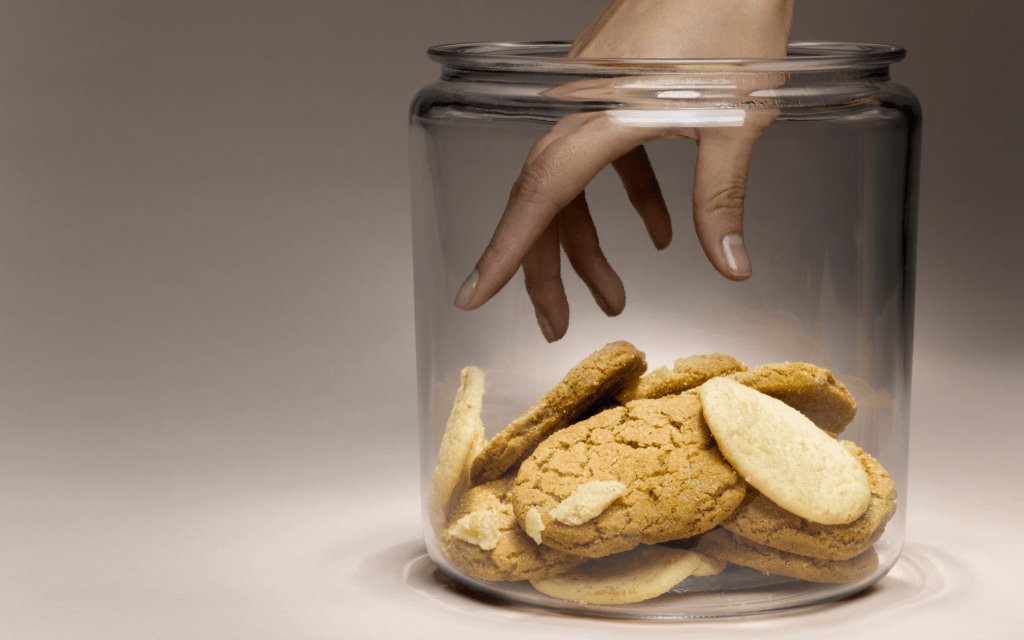Blog
Sugar and sleep

Sleep is essential to health. Equally important as eating well and moving the body.
But what does sleep have to do with sugar? A lot, it turns out!
The importance of sleep
We need sleep for pretty much every aspect of health. This includes proper immune, metabolic, brain, and cardiovascular function, appetite regulation and weight management, tissue repair, psychological health, and more.
Lacking quality sleep, and an adequate amount of it, affects us in many ways.
In the short-term, it is common to experience:
- altered mood
- cravings for less healthy foods
- poor coordination and decision making
- issues with focus, memory, and learning
Chronically, poor sleep compromises immune function and sex drive. It increases the risk for health concerns such as cardiovascular diseases, weight gain, cognitive decline, and insulin resistance and type 2 diabetes.
A 2022 study, published in Diabetologia, found that later bedtime routines and poor quality of sleep are associated with higher blood glucose levels and poorer control of blood sugar following meals.
According to Matthew Walker, sleep scientist and Professor of Neuroscience at UC Berkeley, “Inadequate sleep for just one week disrupts blood sugar levels so profoundly you would be classified as pre-diabetic.”
Crazy, right?
So, what about sleep and what we eat?
Sleep and sugar (and diet)
It has become well-established that sleep and diet are linked and influence one another. This includes the intake of sugary foods.
A study published in the Journal of Clinical Sleep Medicine found people with diets high in sugar tend to sleep less deeply and display greater restlessness at night.
And science shows what many of us experience first-hand: when we don’t sleep properly, we tend to eat more, and more poorly.
Lack of sleep affects the production of the ‘hunger hormones’ two-fold. It stimulates the production of ghrelin, the hormone that increases your appetite, and decreases the production of leptin, the hormone that tells you when you are full.
This is coupled with an increased desire for energy-dense, less healthy foods that activate the brain’s reward centre – including added sugars and refined carbohydrate-rich products.
We also experience a reduction in the ability to curb the impulse to reach for those unhealthy foods.
The result: you are more likely to experience intense cravings and to overeat when underslept.
So begins a vicious, self-perpetuating cycle. But you can turn this around!
Eat for sleep
Eating better throughout the day can lead to better sleep and better food choices the next day.
Higher fibre intake (read: plenty of real and whole plant foods) is associated with deeper, more restorative sleep.
A whole-food, Mediterranean-style diet is suggested as a strategy for those who struggle to get the sleep required. It can help with sleep duration and reduce symptoms of insomnia.
This is an eating pattern rich in vegetables, greens, fruit, legumes, nuts, seeds, oily fish, extra-virgin olive oil, spices, and whole grain.
Additionally, timing when you eat is worth considering. Not eating late at night – when the body is naturally preparing itself for sleep, not digestion – may be better for insulin sensitivity and blood glucose response, and for sleep quality overall.
Prioritise sleep!
Getting enough good quality sleep is fundamental for a well-functioning body and mind.
It will help keep sugar cravings at bay, and you’re less likely to overeat and not have disrupted sleep the following evening due to excess sugar intake.
Alongside diet and exercise, prioritise sleep for improving and maintaining overall health and well-being.
See here for ideas on how to improve your sleep, including adjustments to dietary and lifestyle practices to improve both sleep duration and quality.
By Angela Johnson (BHSc Nut Med)











